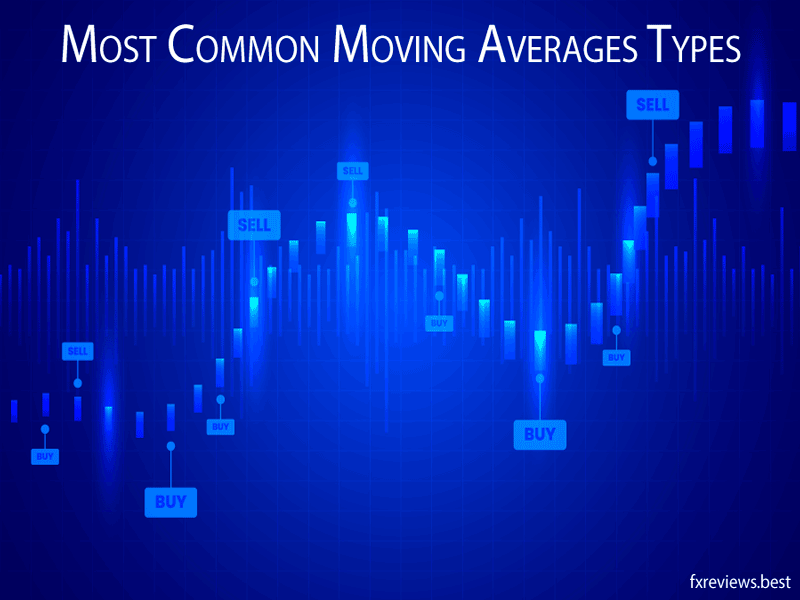The moving averages (or MA) is a technical analysis tool that examines an asset’s price movements over a particular time. This fantastic tool helps the trader in spotting trends, reverse trends, price fluctuations, different spikes, and provides trend signals.
Moreover, it filters the abnormal price movements and prevents a trader from falling into these kinds of traps. Therefore, it is always said to analyze a company before investing thoroughly.
There are several types of moving averages available on the internet. But mainly, there are three moving averages; we need to know.
Let’s understand them!
3 Types of Moving Averages
Simple Moving Average
Simple Moving averages or SMA is the most widely used and most straightforward technical indicator. It lets a trader know the average asset’s prices for a specified period.
It is obtained by adding the costs of an asset for a given time frame like the 1 hour, divided by the total number of time frames taken. A good indicator of when to exit and enter the market, SMA let the traders identify the potential support and resistance points.
The formula of SMA is:
(P1 + P2 + P3 + P4 + Pn) / N
Where N is the number of time frames
P: Price of the stock/commodity
Exponential Moving Average
Another moving average is exponential, which is a little bit more complex to calculate than SMA. Exponential moving average or EMA is a technical indicator that relies on past price data records. It can be calculated differently for Highs, lows open, and closed.
Unlike SMA, EMA emphasizes more recent data. SMA allows equal weight to every price taken, while EMA works by providing more emphasis on recent price records.
The formula for calculating EMA is
(Close – previous day EMA) x (2/n+1) + previous day EMA
Also, EMA is a more reliable source for calculating prices than SMA, because it gives weight to recent data too.
Weighted Moving Average
The last type of moving average on our list is – Weighted. It is a better indicator of prices than EMA and SMA, both. It not only gives more importance to recent data but also multi-weight current data.
For instance, if we have to take the data for three days of any asset, and the weight allotted to them is as follows: One weight for day 1, two weights for day 2, and three weights for day 3. Unlike EMA, it multiplies the weights corresponding to its days.
It is calculated with the help of the following formula
(Rate of Asset x Weight) + (rate of previous period x weight – 1)
So, these were the different types of moving averages. A trader can use them to determine entry and exit points, as well as the support and resistance points. While SMA is a useful and easy indicating tool, EMA and WMA are more responsive to recent price fluctuations.
The Bottom Line
No doubt moving average is a tremendous technical tool, but its emphasis on records doesn’t go well with every asset. For instance, a 100-day moving average might work very well for a particular stock but is not a good indicator for another.
Why? Because it might also be the case that the record of that stock is good, but it is continuously declining. Tools like EMA and WMA can give false results in these scenarios.
Therefore, it is okay to rely on these tools. However, entirely relying on a single instrument or even technical means is not what we suggest. Both fundamental and technical analysis is essential and required if you are investing your valuable money in something.


